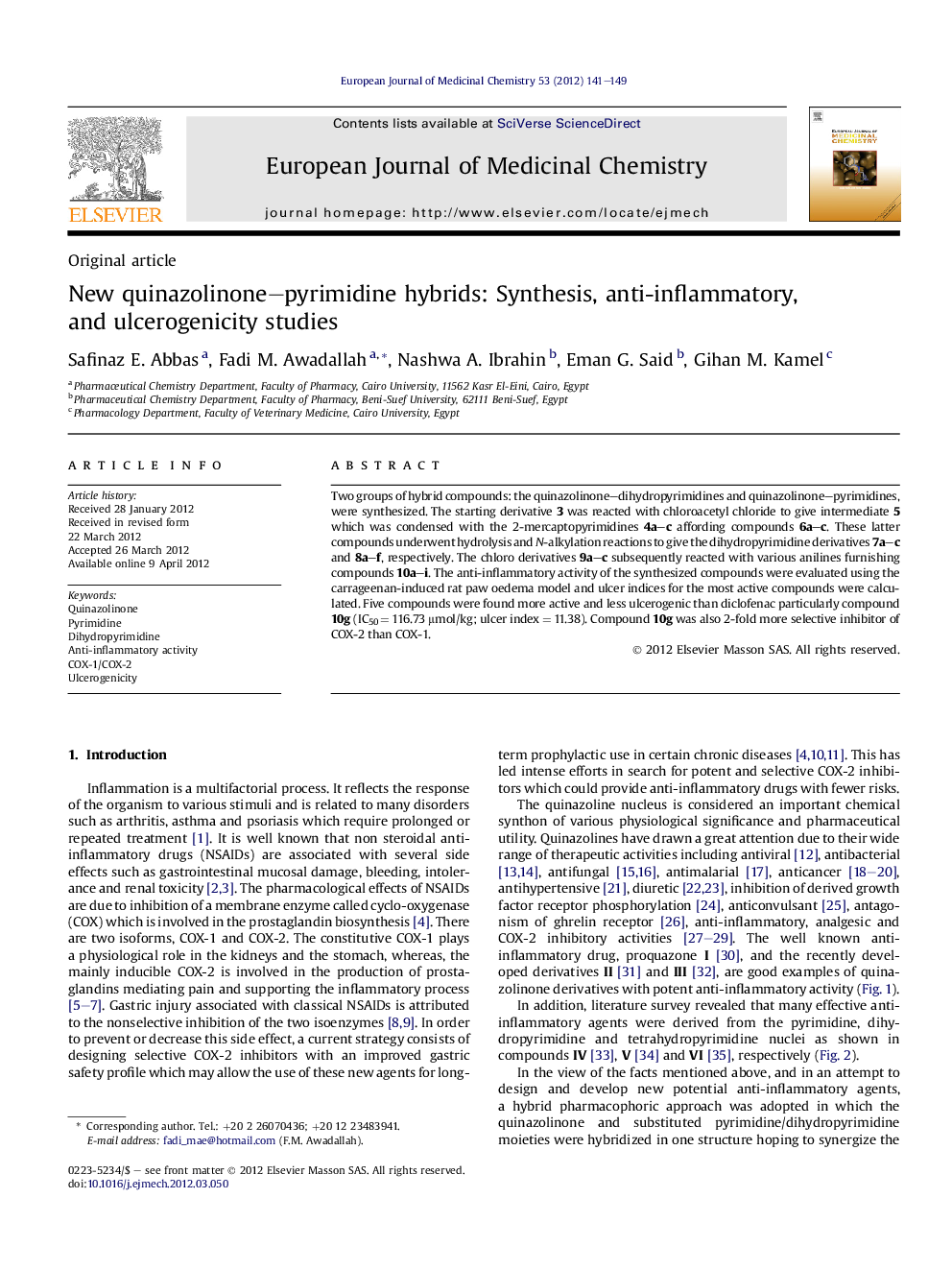| Article ID | Journal | Published Year | Pages | File Type |
|---|---|---|---|---|
| 1392886 | European Journal of Medicinal Chemistry | 2012 | 9 Pages |
Two groups of hybrid compounds: the quinazolinone–dihydropyrimidines and quinazolinone–pyrimidines, were synthesized. The starting derivative 3 was reacted with chloroacetyl chloride to give intermediate 5 which was condensed with the 2-mercaptopyrimidines 4a–c affording compounds 6a–c. These latter compounds underwent hydrolysis and N-alkylation reactions to give the dihydropyrimidine derivatives 7a–c and 8a–f, respectively. The chloro derivatives 9a–c subsequently reacted with various anilines furnishing compounds 10a–i. The anti-inflammatory activity of the synthesized compounds were evaluated using the carrageenan-induced rat paw oedema model and ulcer indices for the most active compounds were calculated. Five compounds were found more active and less ulcerogenic than diclofenac particularly compound 10g (IC50 = 116.73 μmol/kg; ulcer index = 11.38). Compound 10g was also 2-fold more selective inhibitor of COX-2 than COX-1.
Graphical abstractNew quinazoline–pyrimidine/dihydropyrimidine hybrids were synthesized. Anti-inflammatory and ulcerogenicity studies were performed. Compound 10g had (IC50 = 116.73 μmol/kg; ulcer index = 11.38; COX-2/COX-1 = 0.44) whereas diclofenac (IC50 = 141.03 μmol/kg; ulcer index = 17.02).Figure optionsDownload full-size imageDownload as PowerPoint slideHighlights► New quinazoline–pyrimidine/dihydropyrimidine hybrids were synthesized. ► Anti-inflammatory and ulcerogenicity studies were performed. ► 10g, IC50 = 116.73 μmol/kg, is more potent than diclofenac (IC50 = 141.03 μmol/kg). ► Compound 10g has ulcer index of 11.38 (c.f. diclofenac = 17.02). ► COX-2/COX-1 selectivity of 10f is 0.4.
